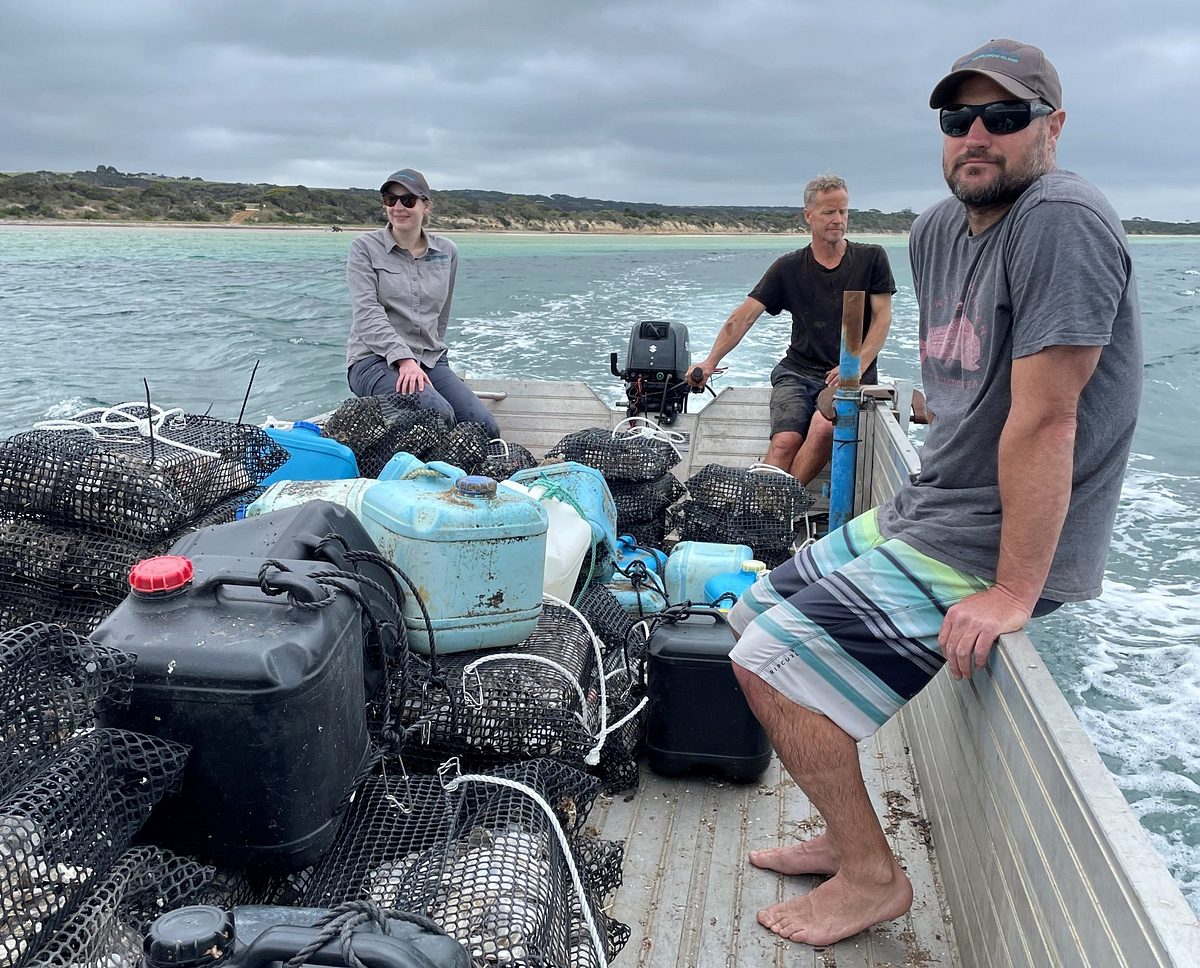Kangaroo Island Landscape Board’s native oyster reefs build this autumn
The Kangaroo Island Landscape Board’s native oyster reef restoration project is well underway with construction due to begin this autumn in coastal waters near Kingscote and American River. These reefs will create a structure for native ‘angasi’ oysters to grow, and provide habitat for recreational fishers to target their favourite species, such as King George whiting and southern calamari.

The Kangaroo Island Landscape Board’s native oyster reef restoration project is well underway. Construction of these reefs in coastal waters near Kingscote and American River are due to start this autumn. These reefs will not only provide a structure for native ‘angasi’ oysters to grow, but also for recreational fishers to target their favourite species, such as King George whiting and southern calamari.
Recent research from the University of Adelaide has illustrated how widespread and abundant native angasi oysters were across southern Australia, including Kangaroo Island (KI), before European settlement. Extensive reefs above and below the tideline were exploited for food and as a building material in the late 1800’s and early 1900’s and now only the odd patch or individual exist on mainland Australia and on KI.
While there are fewer native oysters around KI compared to a hundred years ago, enough breeding individuals remain to restore reefs as oysters can produce millions of offspring each spawning season. Unfortunately, many of these larvae do not survive due to the lack of suitable substrate to colonise and natural predation on spat (settled baby oysters).
To enhance natural recruitment onto the new reefs, Paul Jennings and Alex Comino from the KI Landscape Board have teamed up with local oyster grower Bob Nicholson to place spat ‘collectors’ out in local waters with seasonally high concentrations of native oyster larvae, giving spat a safe place to settle and grow while they are small and vulnerable.
This project is testing various types of collectors, which closely mimic what native oysters prefer in the wild, to determine which techniques work best for restoration on KI and if successful, can be scaled up in the future.
The KILB has been working with local organisations to prepare some of these collectors. The Kingscote Men’s Shed have constructed spat collecting modules out of timber posts. These modules maximise available surface area and protected space for oyster settlement. Graeme Connell, president of the Kingscote Men’s Shed said “Angasi oysters may sound historical to the younger generation of KI locals now but it hasn’t always been the case”.
“Up until the 1980’s I knew of people collecting native oysters to eat and they were still quite common in shallow water on rocks and razorfish around the bay, but since then they have almost disappeared”.
“I’m really pleased that the Landscape Board is making this happen and that members of the men’s shed have been able to pass on this knowledge of historical angasi patches which has helped site selection and reef restoration”, said Mr. Connell.
Recycled oyster shell from The Oyster Farm Shop at American River has been cleaned, sun cured and put in oyster baskets to be used as spat collectors too. Oyster shells are very effective substrates for collecting oyster spat as their texture and chemistry promotes settlement and growth.
These collectors, with settled oysters attached, will be seeded onto the new reefs in autumn 2022, and placed between patches of limestone that will be supplied by local Tony Wilson to form the reef bases.
The benefits of these reefs will begin right away, providing structure, which in turn attracts fish species targeted by recreational fishers. The encrusted surfaces will provide habitat for young fish and invertebrates. The flat oysters will take a few years to grow and produce their own larvae, and eventually become a restored reef reflective of those lost.



